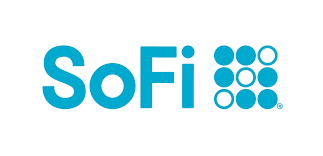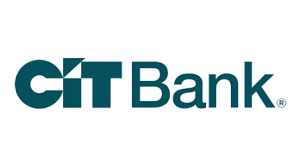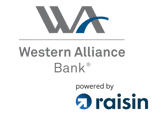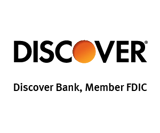When headlines turn gloomy and markets start swinging, it's normal to wonder if your money's in the right place.
Recessions make people second-guess everything from their savings account to their 401(k). But the smartest move usually isn't pulling out of the market or stuffing cash under a mattress. It's finding the right mix of safety, liquidity, and steady return until things stabilize.
So if you're wondering where your money actually belongs when the economy slows, here's where to focus -- and why.
1. High-yield savings accounts (HYSAs)
If you only make one change, start here.
A high-yield savings account gives you immediate access to your money while keeping it protected in an FDIC-insured account. It's ideal for emergency funds and short-term savings -- the cash you might need quickly if hours get cut or unexpected expenses pop up.
Today's best HYSAs pay far more than traditional banks, and you can open one online in minutes.
Why it works in a recession:
- Instant access to funds (no penalties).
- FDIC protection up to $250,000 per depositor, per bank.
- Competitive yields even when the stock market drops.
If you're holding thousands in a checking account earning near-zero interest, moving that cash into an HYSA is one of the safest, easiest upgrades you can make.
Compare savings rates
Make sure you're getting the best account for you by comparing savings rates and promotions. Here are some of our favorite high-yield savings accounts to consider.
| Account | APY | Bonus | Next Steps |
|---|---|---|---|

Open Account for SoFi Checking and Savings
On SoFi's Secure Website.
4.90/5
Our ratings are based on a 5 star scale.
5 stars equals Best.
4 stars equals Excellent.
3 stars equals Good.
2 stars equals Fair.
1 star equals Poor.
We want your money to work harder for you. Which is why our ratings are biased toward offers that deliver versatility while cutting out-of-pocket costs.
|
up to 4.30%
Rate info
Earn up to 4.30% Annual Percentage Yield (APY) on SoFi Savings with a 0.70% APY Boost (added to the 3.60% APY as of 11/12/25) for up to 6 months. Open a new SoFi Checking & Savings account and enroll in SoFi Plus by 1/31/26. Rates variable, subject to change. Terms apply at sofi.com/banking#2. SoFi Bank, N.A. Member FDIC.
Min. to earn: $0
|
Earn up to $300 and +0.70% Boost on Savings APY with direct deposit. Terms apply.
Earn up to 4.30% Annual Percentage Yield (APY) on SoFi Savings with a 0.70% APY Boost (added to the 3.60% APY as of 11/12/25) for up to 6 months. Open a new SoFi Checking & Savings account and enroll in SoFi Plus by 1/31/26. Rates variable, subject to change. Terms apply at sofi.com/banking#2. SoFi Bank, N.A. Member FDIC.
|
Open Account for SoFi Checking and Savings
On SoFi's Secure Website. |

Open Account for CIT Platinum Savings
On CIT's Secure Website.
4.60/5
Our ratings are based on a 5 star scale.
5 stars equals Best.
4 stars equals Excellent.
3 stars equals Good.
2 stars equals Fair.
1 star equals Poor.
We want your money to work harder for you. Which is why our ratings are biased toward offers that deliver versatility while cutting out-of-pocket costs.
|
3.75%
Rate info
3.75% APY for balances of $5,000 or more; otherwise, 0.25% APY
Min. to earn: $5,000
|
Earn a bonus of up to $300 after a one-time deposit of $25,000+
This limited-time offer to qualify for a $225 cash bonus with a minimum deposit of $25,000 or a $300 bonus with a minimum deposit of $50,000 is available to New and Existing Customers who meet the Platinum Savings promotion criteria. The Promotion begins on September 23, 2025, and can end at any time without notice. Customers will receive a $225 or a $300 bonus provided that the program requirements are met. Click here to see promotion details and terms: https://www.cit.com/cit-bank/platinum-savings/PS2025
|
Open Account for CIT Platinum Savings
On CIT's Secure Website. |

Open Account for Western Alliance Bank High-Yield Savings Premier
On Western Alliance Bank's Secure Website.
4.40/5
Our ratings are based on a 5 star scale.
5 stars equals Best.
4 stars equals Excellent.
3 stars equals Good.
2 stars equals Fair.
1 star equals Poor.
We want your money to work harder for you. Which is why our ratings are biased toward offers that deliver versatility while cutting out-of-pocket costs.
|
3.95%
Rate info
The annual percentage yield (APY) is accurate as of November 18, 2025 and subject to change at the Bank’s discretion. Refer to product’s website for latest APY rate. Minimum deposit required to open an account is $500 and a minimum balance of $0.01 is required to earn the advertised APY.
Min. to earn: $500 to open, $0.01 for max APY
|
N/A
|
Open Account for Western Alliance Bank High-Yield Savings Premier
On Western Alliance Bank's Secure Website. |
The annual percentage yield (APY) is accurate as of November 18, 2025 and subject to change at the Bank’s discretion. Refer to product’s website for latest APY rate. Minimum deposit required to open an account is $500 and a minimum balance of $0.01 is required to earn the advertised APY.
Accurate as of the time of publication. The national average rate referenced is from the FDIC’s published National Rates and Rate Caps for Savings deposit products, accurate as of November 17, 2025. See the FDIC website for more information.
Platinum Savings is a tiered interest rate account. Interest is paid on the entire account balance based on the interest rate and APY in effect that day for the balance tier associated with the end-of day account balance. *APYs — Annual Percentage Yields are accurate as of November 20, 2025: 0.25% APY on balances of $0.01 to $4,999.99; 3.75% APY on balances of $5,000.00 or more. Interest Rates for the Platinum Savings account are variable and may change at any time without notice. The minimum to open a Platinum Savings account is $100.
Based on comparison to the national average Annual Percentage Yield (APY) on savings accounts as published in the FDIC National Rates and Rate Caps, accurate as of November 20, 2025.
For complete list of account details and fees, see our Personal Account disclosures.
2. Short-term certificates of deposit (CDs)
If you have money you won't need right away, you can lock in a solid CD rate for a set period, often anywhere from six months to three years.
During recessions, interest rates can fluctuate as the Fed adjusts policy, so locking in now can help you secure a yield that doesn't drop later.
Why it works:
- Predictable returns for a fixed term.
- FDIC insured, just like savings accounts.
- No temptation to dip into it -- your rate and timeline are set.
Short-term CDs (under one year) are especially useful if you want to earn more than a savings account without committing long-term.
On Synchrony Bank's Secure Website.
On Raisin's Secure Website.
On Discover Bank's Secure Website.
3. Treasury bills and money market funds
If you want a place to park larger sums safely, Treasury bills and money market funds are strong options.
Treasury bills (or "T-bills") are backed by the U.S. government and mature in a few weeks to a year. Money market funds typically invest in these same short-term securities and can offer steady, low-risk returns.
Why it works:
- Among the safest investments available.
- Often yield more than standard savings accounts.
- Easy to reinvest as they mature.
You can buy T-bills through most brokerage accounts.
4. I bonds and inflation-protected securities
If inflation is still running hot, consider Series I savings bonds or Treasury Inflation-Protected Securities (TIPS). These adjust their returns based on inflation, helping your savings keep pace with rising prices.
Why it works:
- Backed by the U.S. government.
- Adjusts automatically with inflation.
- Long-term protection for part of your savings.
Just remember: I bonds have a one-year lockup and a penalty if you cash out before five years, so they're best for medium-term money, not emergency cash.
5. Keep investing, but shift your strategy
Even during a recession, long-term investors shouldn't abandon the market entirely. If you have decades until retirement, staying invested during a recession helps you capture the recovery when it comes.
For short-term money, though, keep it safe. But for long-term growth:
- Stick to diversified index funds or ETFs.
- Avoid panic-selling during dips.
- Keep contributions small but steady.
Think of it this way: recession money needs two homes -- one for stability (cash, CDs, T-bills), and one for growth (long-term investments you don't touch).
How to divide it all up
There's no one-size-fits-all formula, but here's a simple framework:
- Short-term needs (0–2 years): High-yield savings, short-term CDs, T-bills.
- Medium-term goals (2–5 years): Mix of CDs and I Bonds.
- Long-term goals (5+ years): Stock market, index funds, retirement accounts.
The goal is flexibility: keep what you need soon in safe, liquid accounts, and let the rest keep working toward long-term growth.
Bottom line
Recessions test how prepared you are -- not just financially, but emotionally. The good news is, you don't have to overhaul everything to feel secure.
Start by moving your short-term cash somewhere safe and productive: a high-yield savings account, CD, or Treasury-backed investment. Then make sure your long-term money stays invested, ready for the recovery that always follows.
Because when it comes to recessions, the smartest move isn't timing the market -- it's putting your money where it can weather the storm and keep growing through it.
Annual Percentage Yield (APY) is subject to change at any time without notice. Offer applies to personal non-IRA accounts only. Fees may reduce earnings. For CD accounts, a penalty may be imposed for early withdrawals. After maturity, if your CD rolls over, you will earn the offered rate of interest in effect at that time. Visit synchrony.com/banking for current rates, terms and account requirements. Member FDIC.


